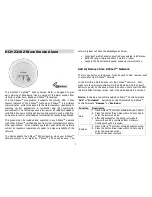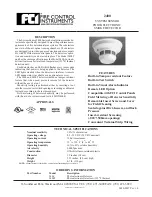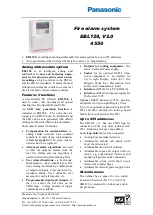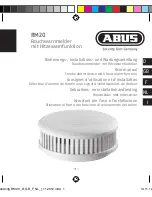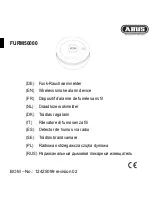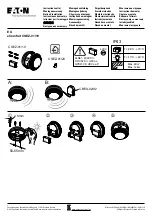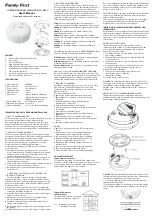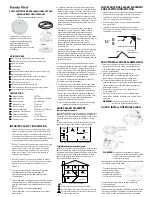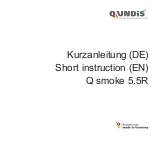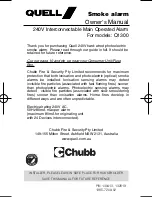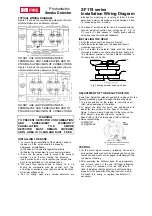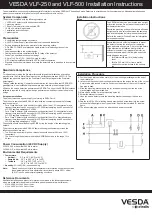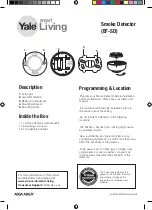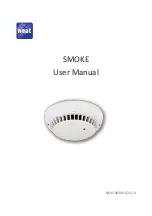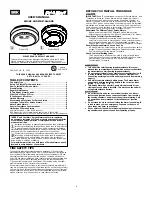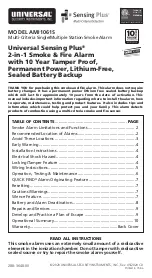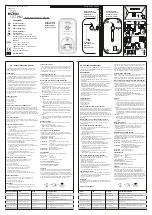
3
SELECTING A LOCATION
Selecting a suitable location is critical to the operation of smoke alarms. This
equipment should be installed in accordance with National Fire Protection
Association’s (NFPA) Standard 72 (see Figure 6).
A-11-8.3a Where to Locate the Required Smoke Alarms in Existing
Construction.
The major threat from fi re in a family living unit occurs at night when everyone
is asleep. The principal threat to persons in sleeping areas comes from fi res in
the remainder of the unit. Therefore, a smoke alarm(s) is best located between
the bedroom areas and the rest of the unit. In units with only one bedroom area
on one fl oor, the smoke alarm(s) should be located as shown in Figure 6A.
In family living units with more than one bedroom area or with more than one
fl oor, more than one smoke alarm is required, as shown in Figure 6B.
In addition to smoke alarms outside of the sleeping areas, the installation of
a smoke alarm on each additional story of the family living unit, including the
basement, is required. These installations are shown in Figure 6C. The living
area smoke alarm should be installed in the living room or near the stairway
to the upper level, or in both locations. The basement smoke alarm should be
installed in close proximity to the stairway leading to the fl oor above. Where
installed on an open-joisted ceiling, the alarm should be placed on the bottom
of the joists. The alarm should be positioned relative to the stairway to intercept
smoke coming from a fi re in the basement before smoke enters the stairway.
Where to Locate the Required Smoke Alarms in New Construction.
All of the smoke alarms specifi ed for existing construction are required and, in
addition, a smoke alarm is required in each bedroom.
Are More Smoke Alarms Desirable?
The required number of smoke alarms might not provide reliable early warning
protection for those areas separated by a door from the areas protected by the
required smoke alarms. For this reason, it is recommended that the householder
consider the use of additional smoke alarms for those areas for increased
protection. The additional areas include the basement, bedrooms, dining
room, furnace room, utility room, and hallways not protected by the required
smoke alarms. The installation of smoke alarms in kitchens, attics (fi nished
or unfi nished), or garages is not normally recommended, as these locations
occasionally experience conditions that can result in improper operation.
Since regulations pertaining to smoke alarm/detector installation vary from
state to state, contact the authority having jurisdiction (AHJ). Where public
safety is primary, the AHJ may be federal, state, local, or other regional
department or individual such as a fi re chief, fi re marshal, chief of a fi re
prevention bureau, labor or health department, building offi cial, electrical
inspector, or others having statutory authority. For insurance purposes, an
insurance inspection department, rating bureau, or other insurance company
representative may be the AHJ. In some cases, the property owner or their
designated agent assumes the role of the AHJ. At government installations,
the commanding offi cer or department offi cial may be the AHJ.
In addition to NFPA 72, use the following location guidelines to optimize
performance and reduce the chance of false alarms from the alarm:
• Locate ceiling-mounted smoke alarms in he center of a room or hallway
at least 4 inches (10cm) from any walls or partitions.
• Locate wall-mounted smoke alarms so the top of the alarm is 4 to 12
inches (10 to 31cm) below the ceiling.
• Locate in a suitable environment as follows:
• Temperature between 40°F (4.4°C) and 100°F (37.8°C)
• Humidity between 0 and 95% non-condensing
• Locate away from air conditioners, heating registers, and any other
ventilation source that may interfere with smoke entering the alarm.
• Mount smoke alarms on a fi rm permanent surface.
• Locate away from large metallic objects to reduce shielding of the
wireless transmitter’s signal.
Smoke alarms are not to be used with detector guards unless the
combination has been evaluated and found suitable for that purpose.
Indicates additional smoke alarms
required for new construction
IMPORTANT: Regulations pertaining to
smoke alarm installations vary from
state to state. For more information,
contact your local fire department or
local authority having jurisdiction.
B
A
C
ST
AIRS
Figure 6. Smoke Alarm Placement









